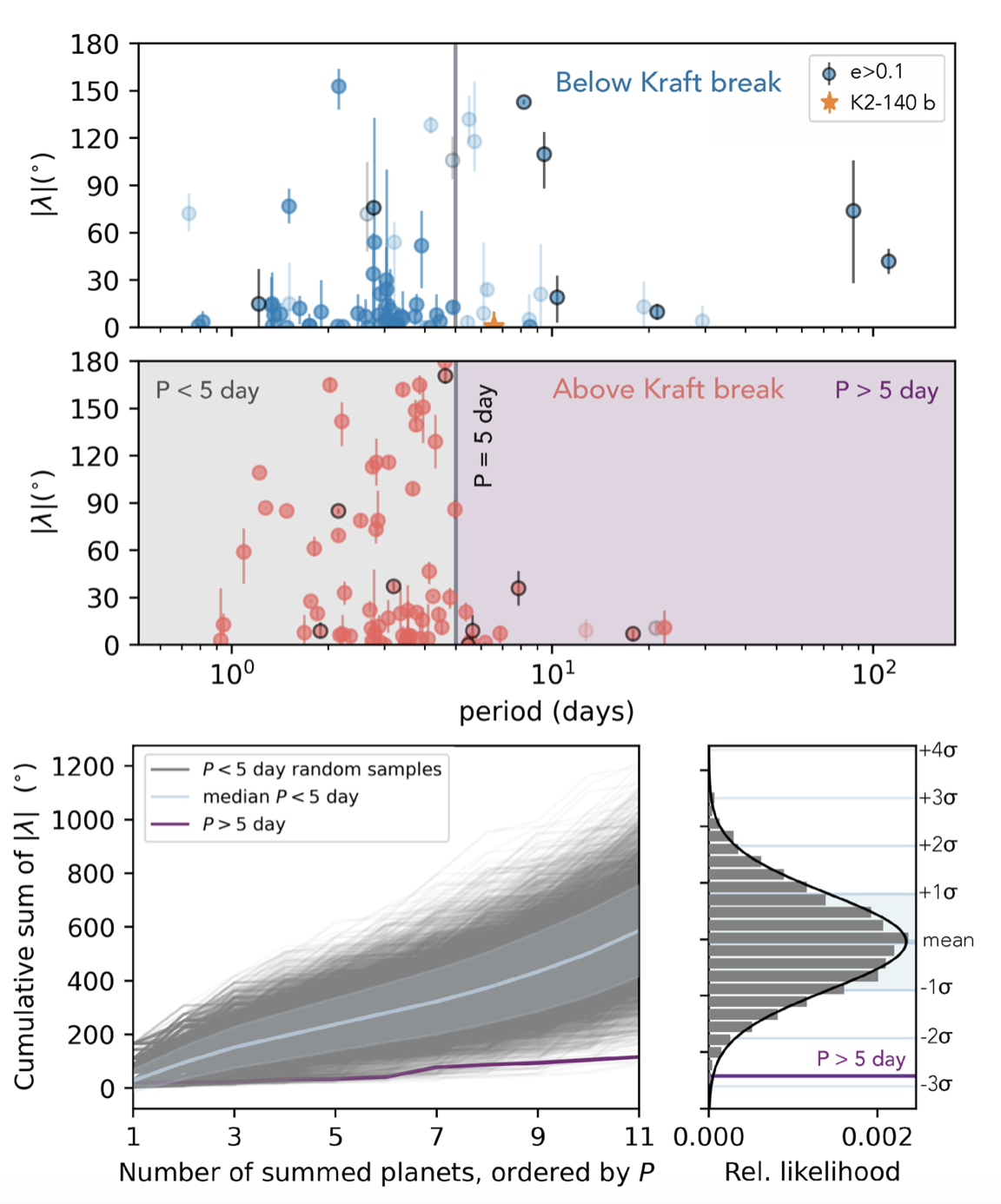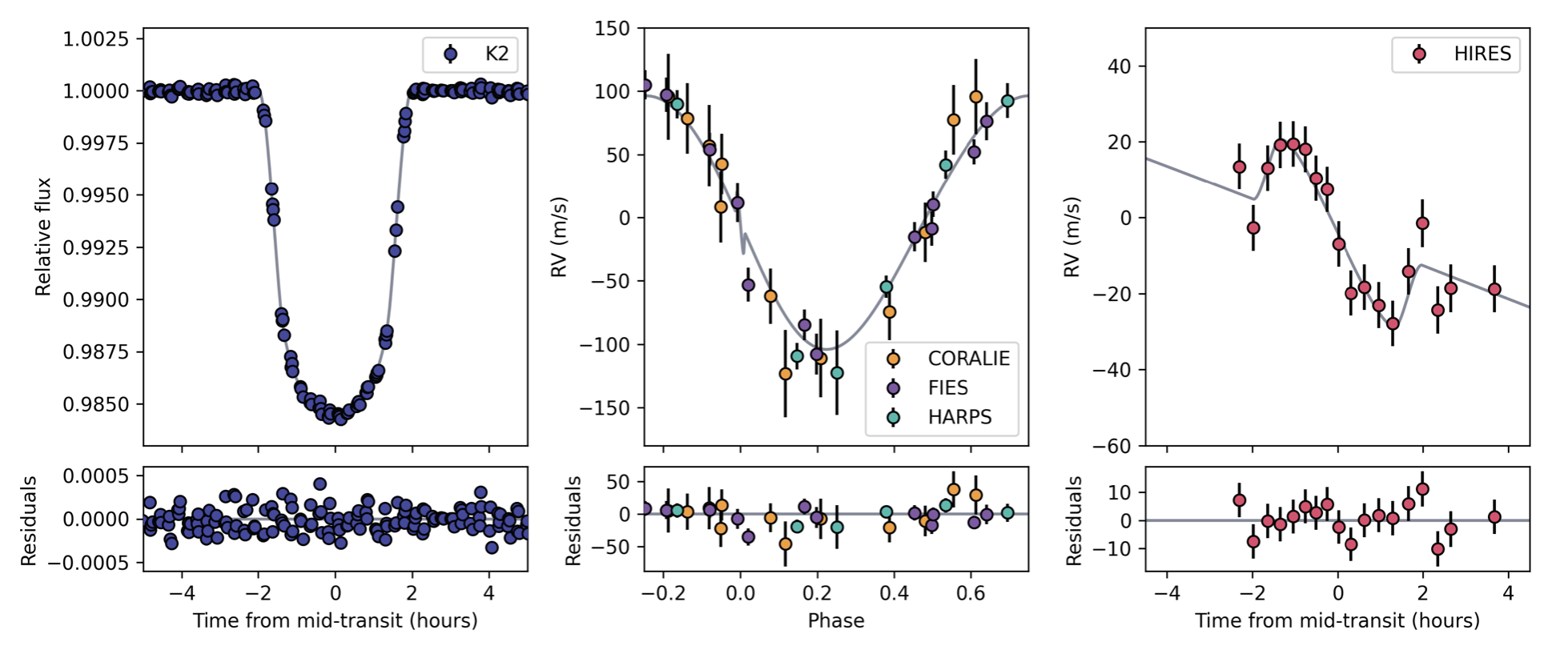Research Highlight #5
The Stellar Obliquities in Long-period Exoplanet Systems (SOLES) Survey
(Rice, Wang, Howard, et al. 2021, AJ 162, 182)
The ''obliquity'' of a star characterizes the offset between the stellar spin axis and the net angular momentum axis of its companion planets. This angle tells us whether the planetary system is aligned — that is, whether the planets orbit in the same direction that the star rotates. While the solar system planets are nearly aligned, extrasolar systems have been found with planets on sideways and upside-down orbits.
Sky-projected obliquity measurements are typically made across the transit of a planet, using either the Rossiter-McLaughlin effect or Doppler tomography. As a result, most exoplanet systems with measured obliquities host short-period planets, since these planets have a relatively high likelihood of transiting their host star. However, short-period planets experience strong tidal damping from interactions with their host star, complicating the interpretation of these measurements.

Figure 1: Hot stars with long-period exoplanets tentatively appear to be less misaligned than cool stars with long-period exoplanets.
Systems with longer-period planets are less heavily affected by tidal damping, so their obliquities can help us to understand how planetary systems become tilted. So far, the population of P>5 day planets has demonstrated a very different obliquity distribution from that observed in shorter-period planet systems. Planets on very tight orbits tend to be aligned if they orbit cool stars, while they span a much wider range of spin-orbit orientations around hot stars. This is potentially due to differences in the stars’ tidal and/or magnetic properties that make cool stars more effective at realigning their planetary companions. This trend is less clear for longer-period planets, as shown above; in fact, we find tentative (2.79σ) evidence that the opposite trend is present at longer orbital periods, where cool star systems are more misaligned than hot star systems.
The trend of low obliquities in these systems may suggest that protoplanetary disks are typically aligned at the time of gas dispersal. Several high-obliquity cool star systems host eccentric planets, as well, which may at least partially account for the hot/cool star discrepancy: these systems may be undergoing high-eccentricity migration or another dynamical mechanism that pumps up both their stellar obliquity and eccentricity. The SOLES survey is designed to extend the sample of spin-orbit measurements for relatively wide-separation planets to disentangle which trends are robust and what they tell us about transiting planetary systems' dynamical evolution.

Figure 2: Exoplanets with measured host star obliquities λ. The spread in measured obliquities is larger at higher eccentricity for systems with e≠0.
In this first paper of the SOLES survey, we measured the stellar obliquity of K2-140 by observing the Rossiter-McLaughlin effect across the transit of K2-140 b, a Jupiter-mass exoplanet with period P=6.57 days and a/R*=12.88. We found that K2-140 is an aligned system, consistent with the planet's low eccentricity.

Figure 3: Joint fit results for the K2-140 system using new Rossiter-McLaughlin measurements (right), as well as archival photometry (left) and radial velocity data (center).
K2-140 b is too far from its host star to have been realigned by equilibrium tides — so, we conclude that it was likely primordially aligned. Our ongoing survey will help to determine whether this is common around both hot and cool stars, and whether there are multiple hot and warm Jupiter formation mechanisms at play. Stay tuned!